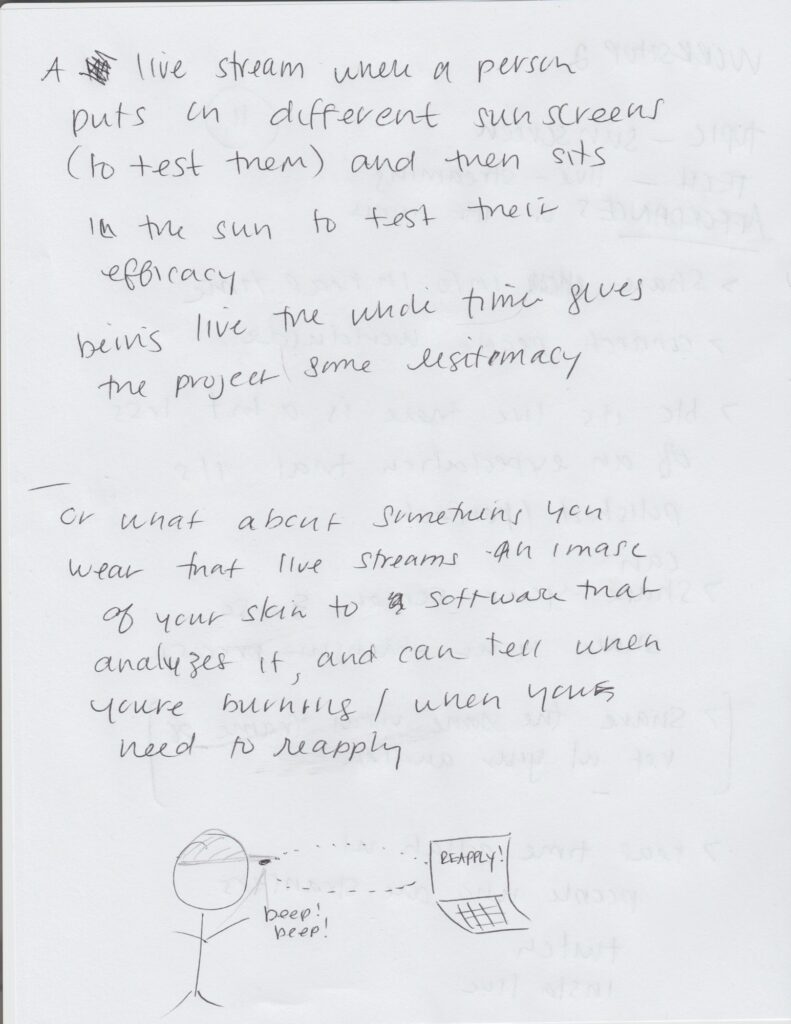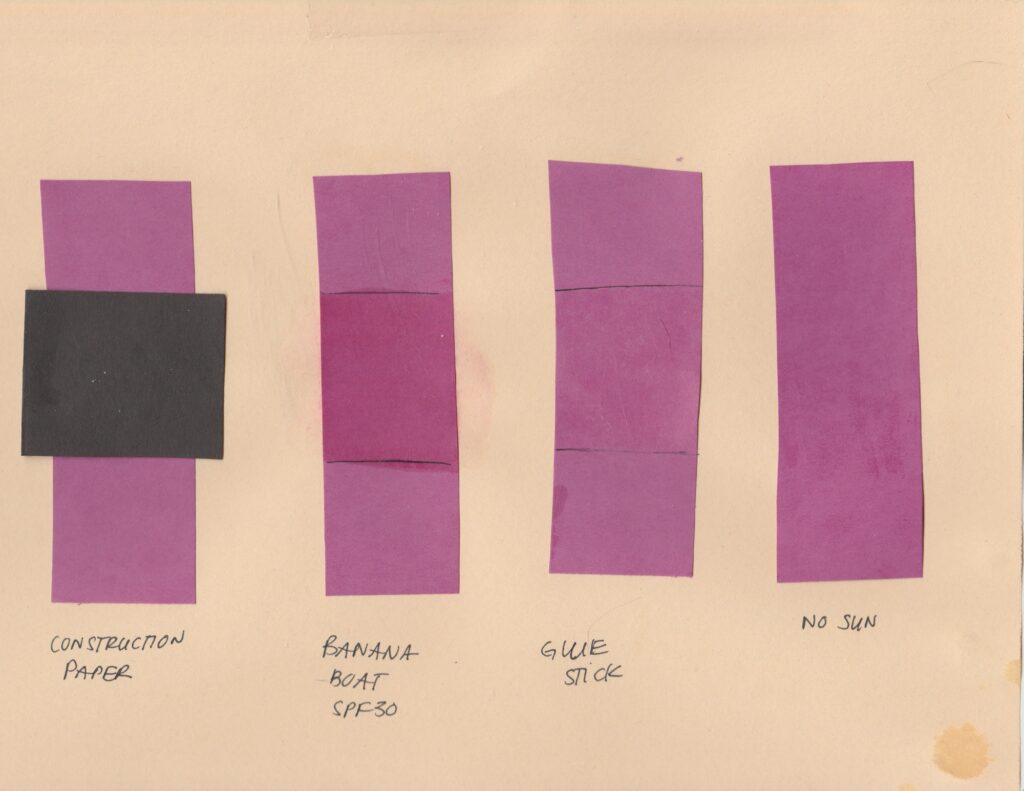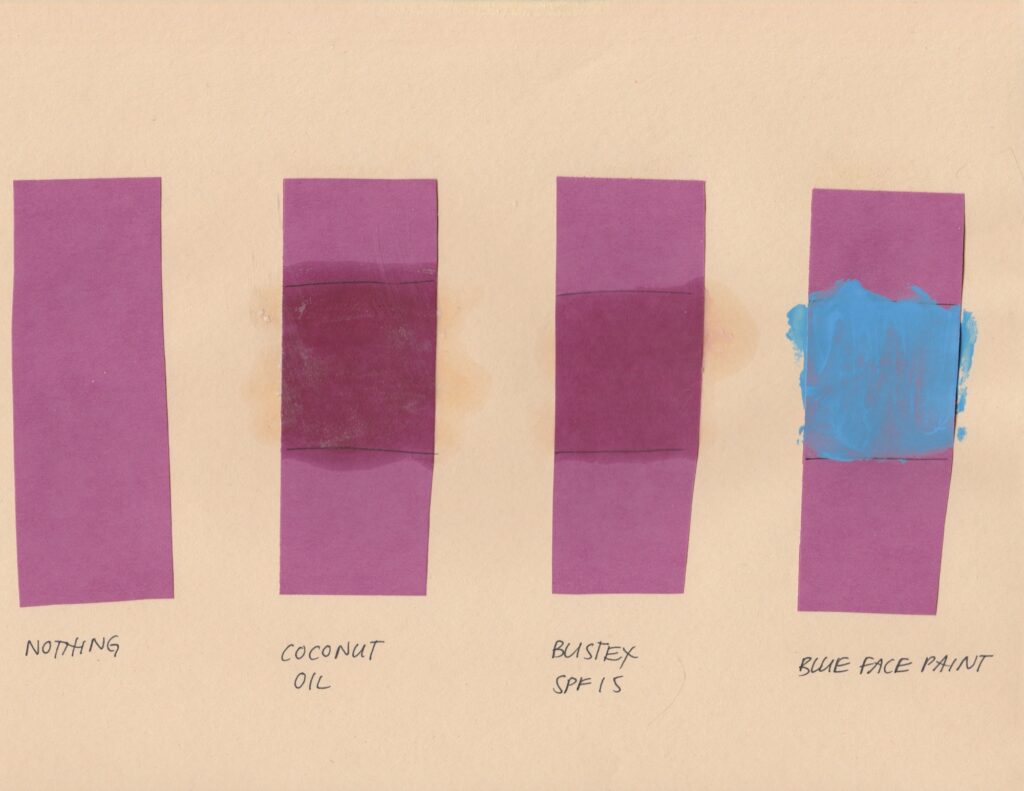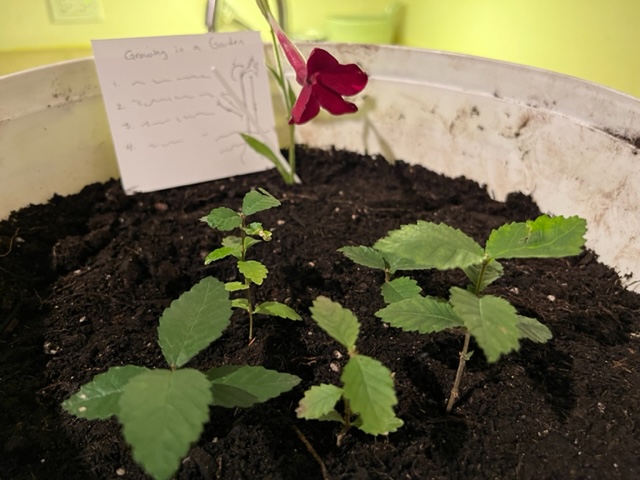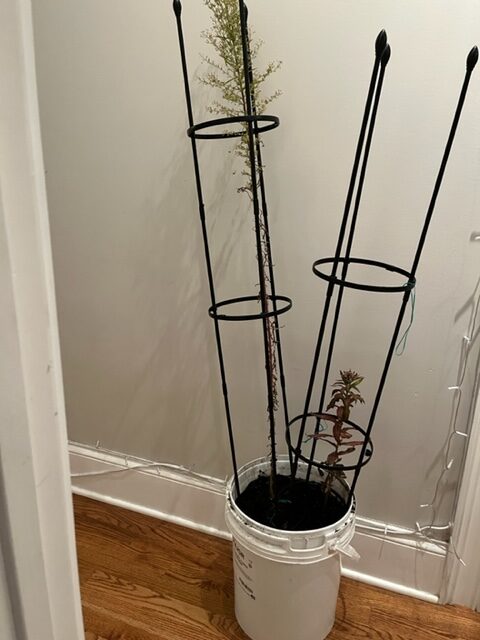November 2022
Topic 2 – Janky Prototypes
- Prototype 1:
This is the note I wrote in class. MP3 player was the one I chose. In the sketch I made in class, I used the MP3 player as the instructor for the game. The game was suppose to be like monopoly or snakes and ladder, two or more players take turns to move on the map. Now instead of rolling a dice to determent the movements, the MP3 player will tell the speakers how to move and what to do. This simulates the process of facilitated activity, in which the game was fully controlled by the facilitator.
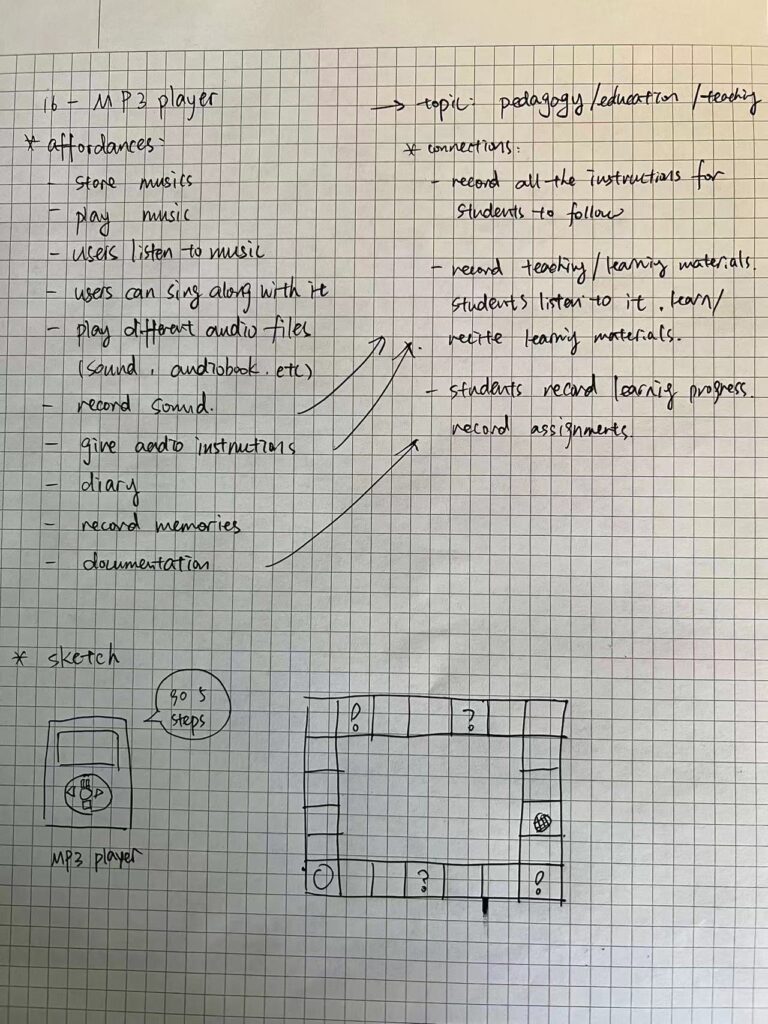
- Prototype 2:
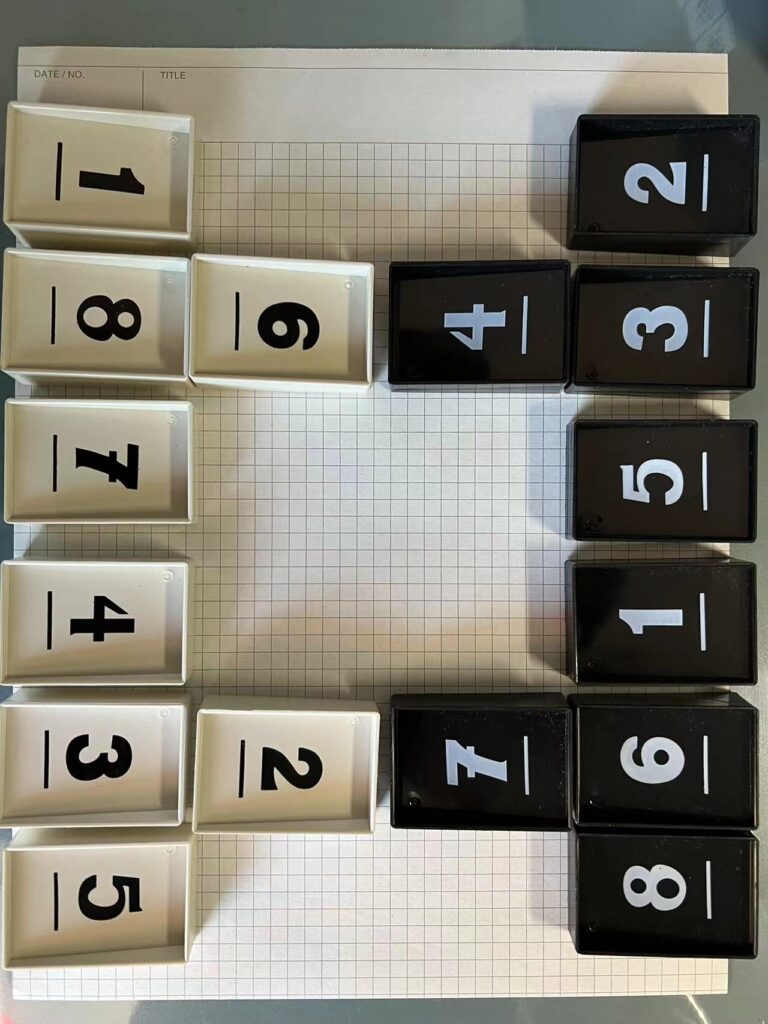
This is a board game I designed based on the rules of chess. I use numbered pieces from another board game to be the pieces in this “number chess” game. Different numbers have different abilities and ways to move. Unlike chess, the pieces are placed randomly on the board. There are no set rules for this chess, game, players have to come up with their own rules to play this game. This game simulates a learning situation without or lack of facilitation. Students have to self-regulate and learn things within the student learning group.
- Prototype 3:
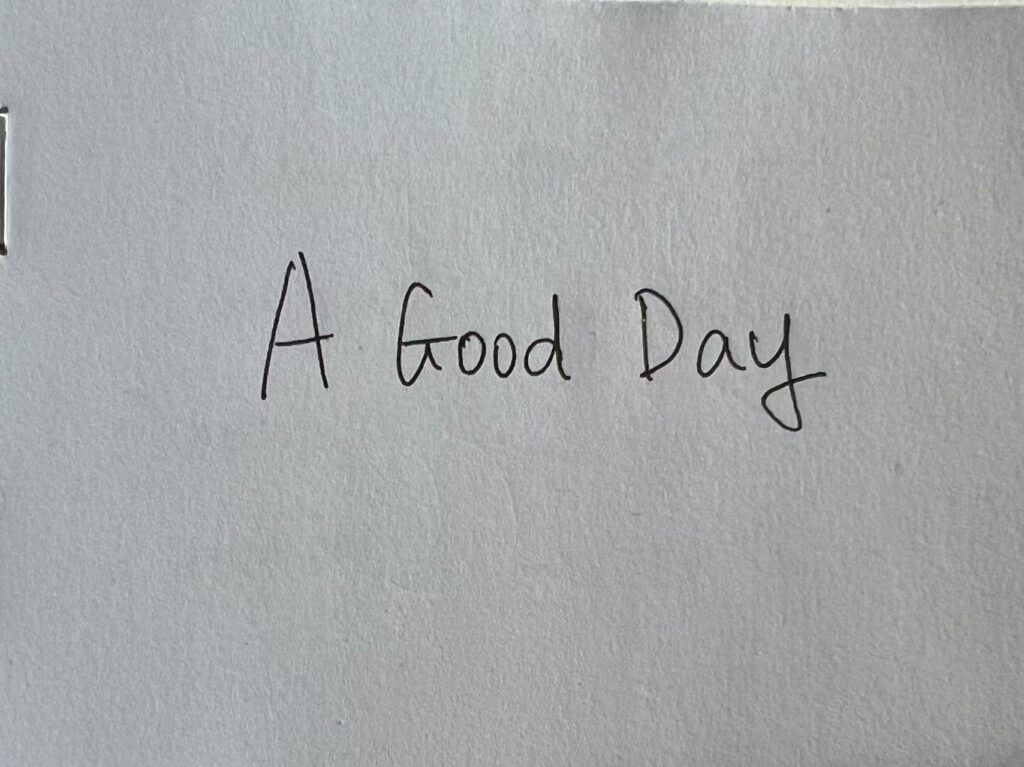
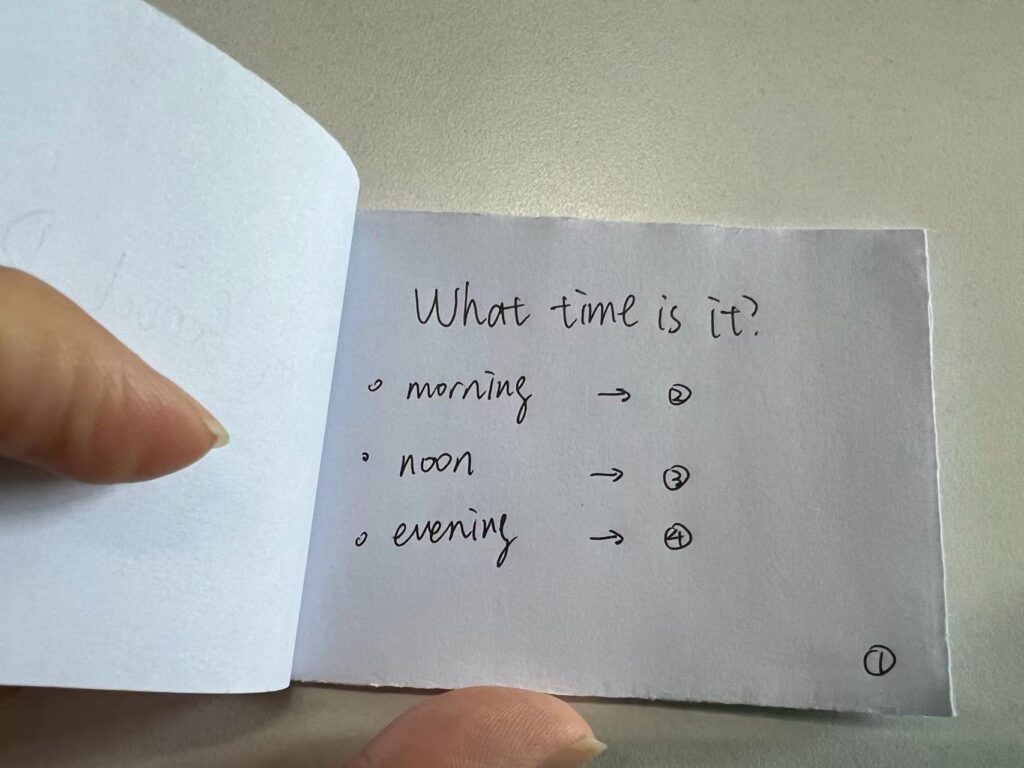
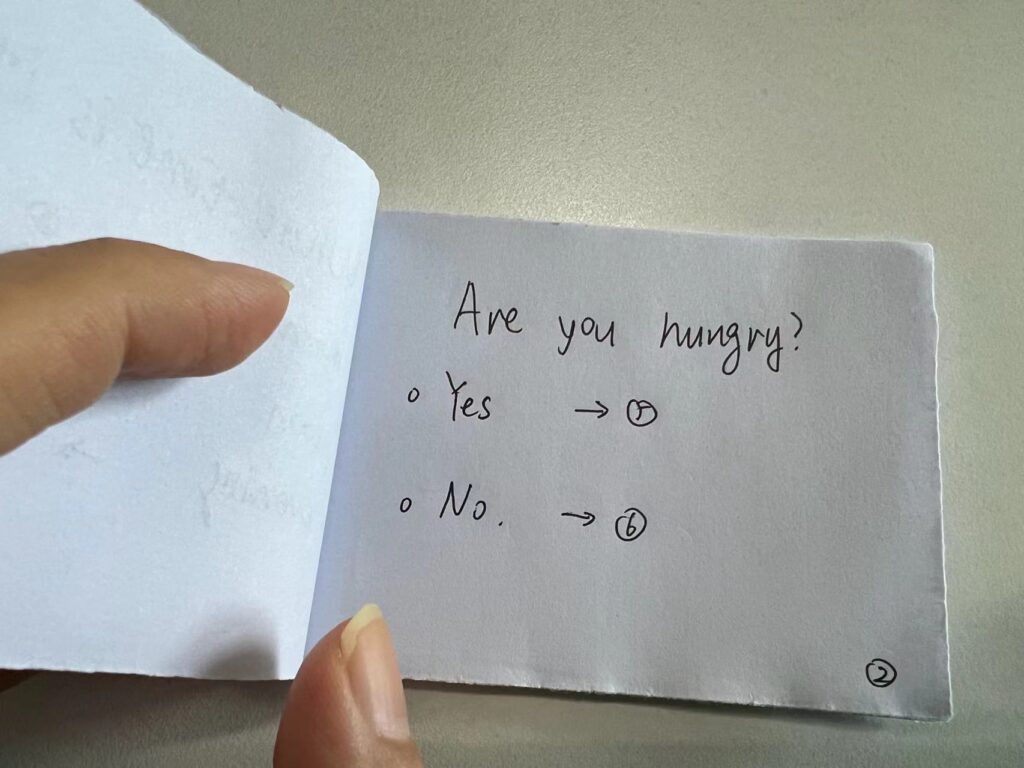
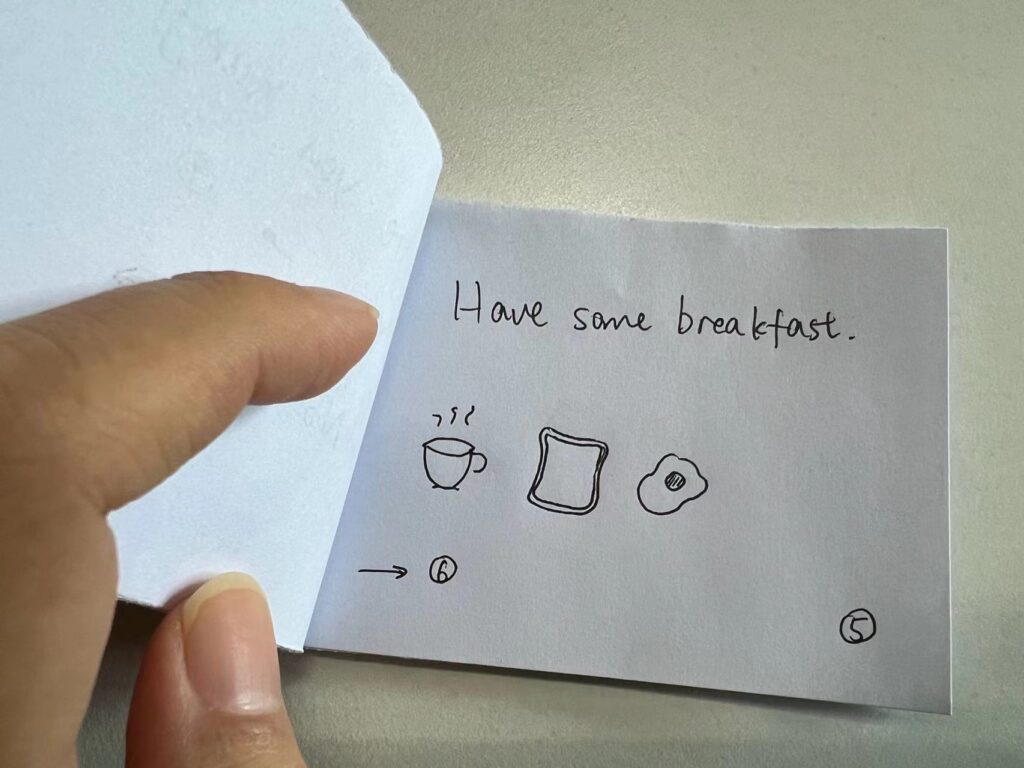
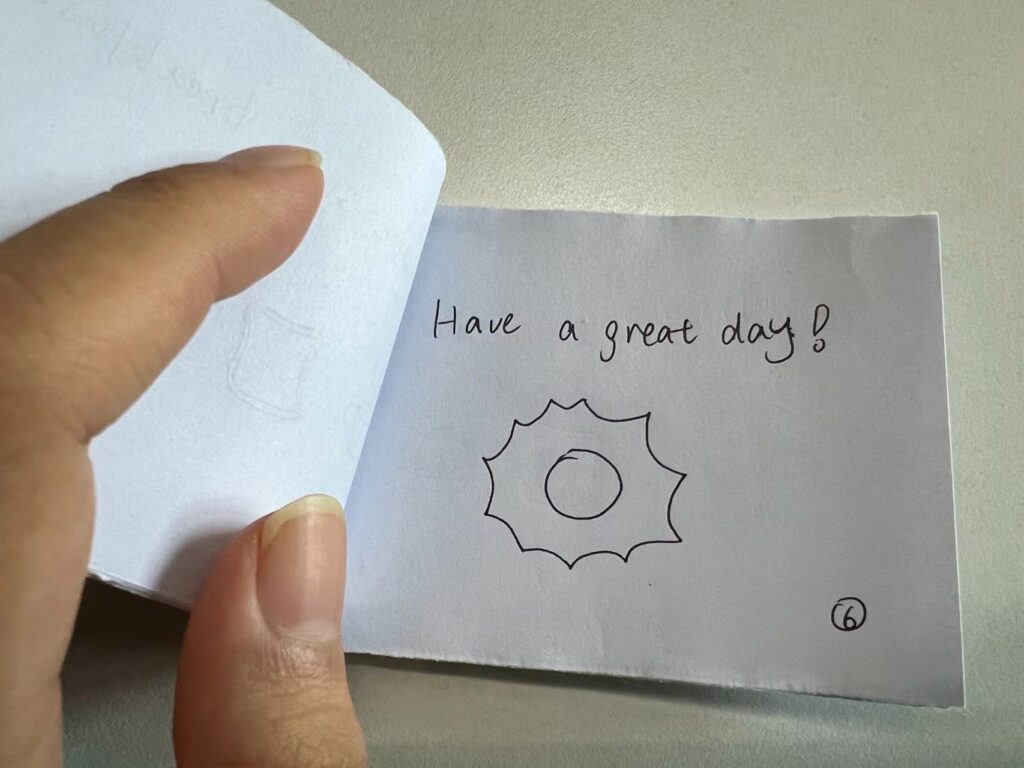
This is a small choosing book I made. Base on the answers to the questions, you can get different results. This prototype aims to simulate how computer programs make decisions. Different from human, which can generate countless questions and answers, a computer can only response to certain preprogrammed answers. This shows the limitation of not having a human teacher in the class.
Topic 2 – systems maps
In this map, I’m trying to analyze the effects of “teacher” in different ranges. I looked at different scopes, from the connection between teacher and individual student, to how teachers could affect students out of school, in the society.

This second map shows how a person learn in different level. A person can study on oneself, be influenced by one’s family, learns things in class, makes connections with peers in school, and finally steps into the society and learn from one’s social experiences.
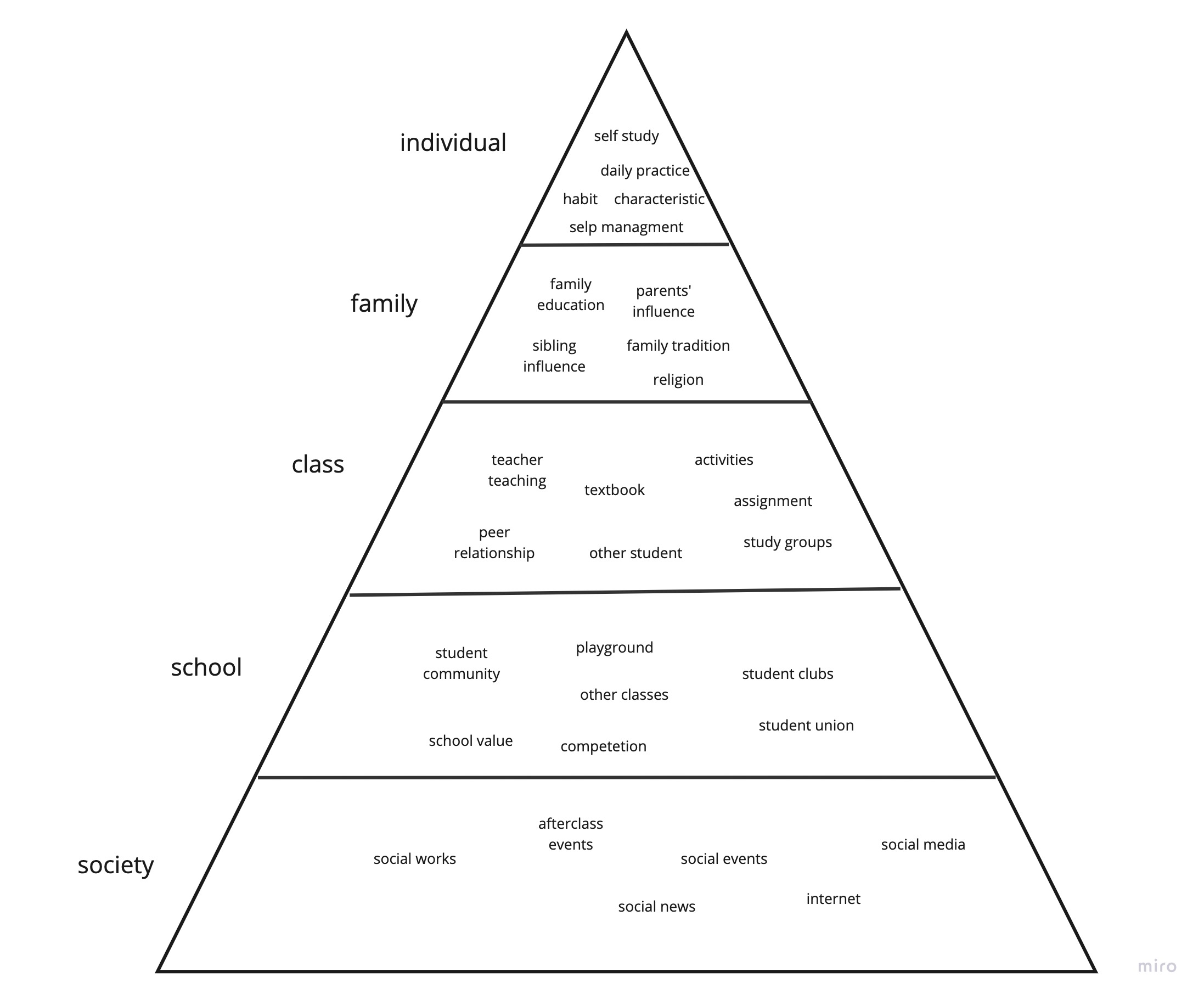
Through these two maps, I’m looking at two different perspectives: teacher and student. Which leads to my topic of interest: what would happen if there were on longer teachers teaching in class. Could textbook, AI, technology, or other things take over the place of a teacher? What’s the advantage and disadvantage for having human teacher in a classroom.
Topic 2 – Janky Prototypes/Sketches (Concepts 2 & 3)
Topic: Memories edited to History
Concept 2: The Memory Scanner
Potential Technology: AR/Google Translate
Sketch:
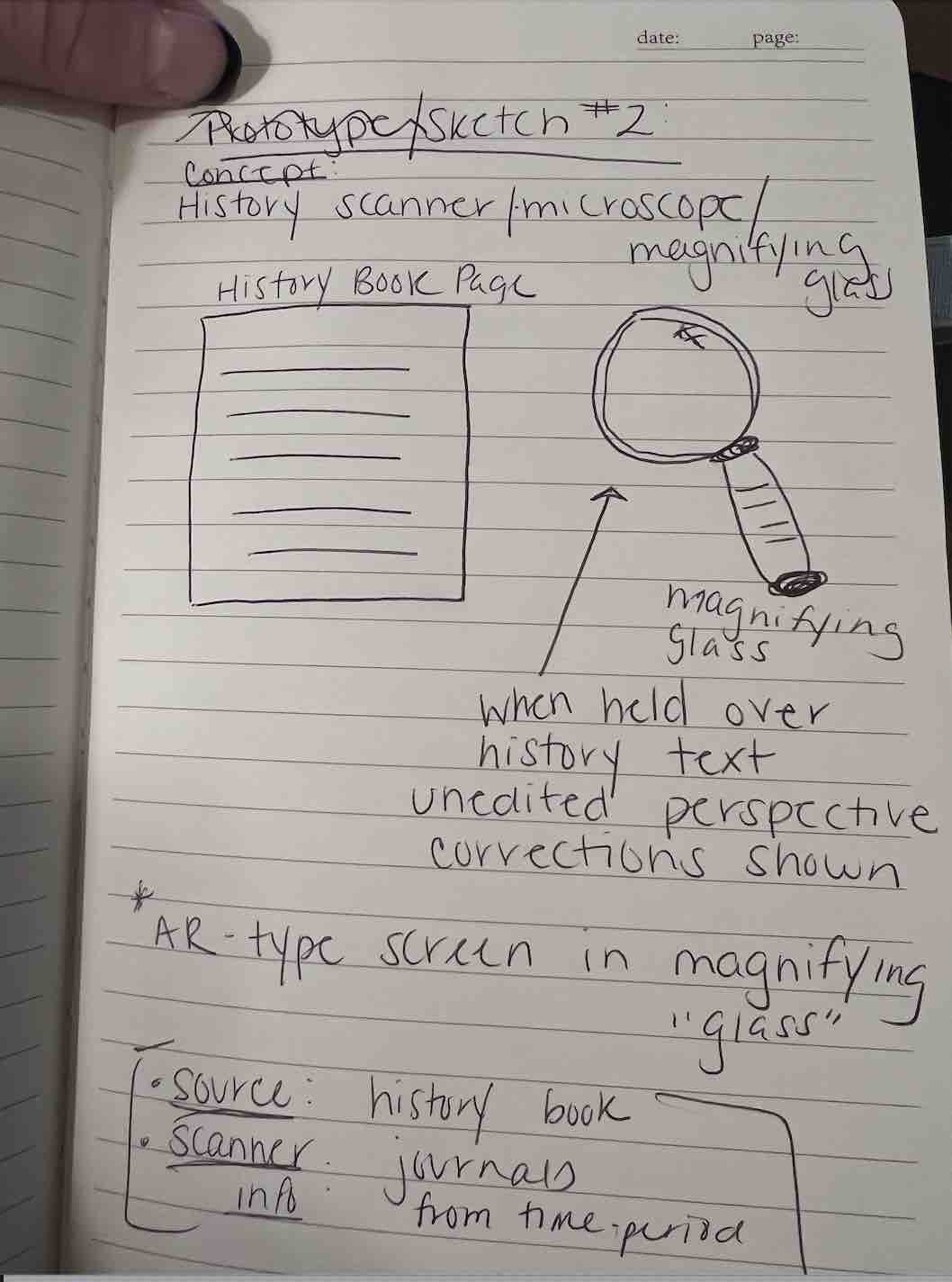
Concept 3: Historical Perspectives
Potential Technology: Computer video game
Sketch:

Topic 2: Janky Prototype (Concept 1 – The History Maker)
Topic: Editing Memory to History
Concept 1: “The History Maker”Picking up from my Daily Practice notes, I further refined the idea of my Dr. Suess-inspired input/output machine
Sketch:
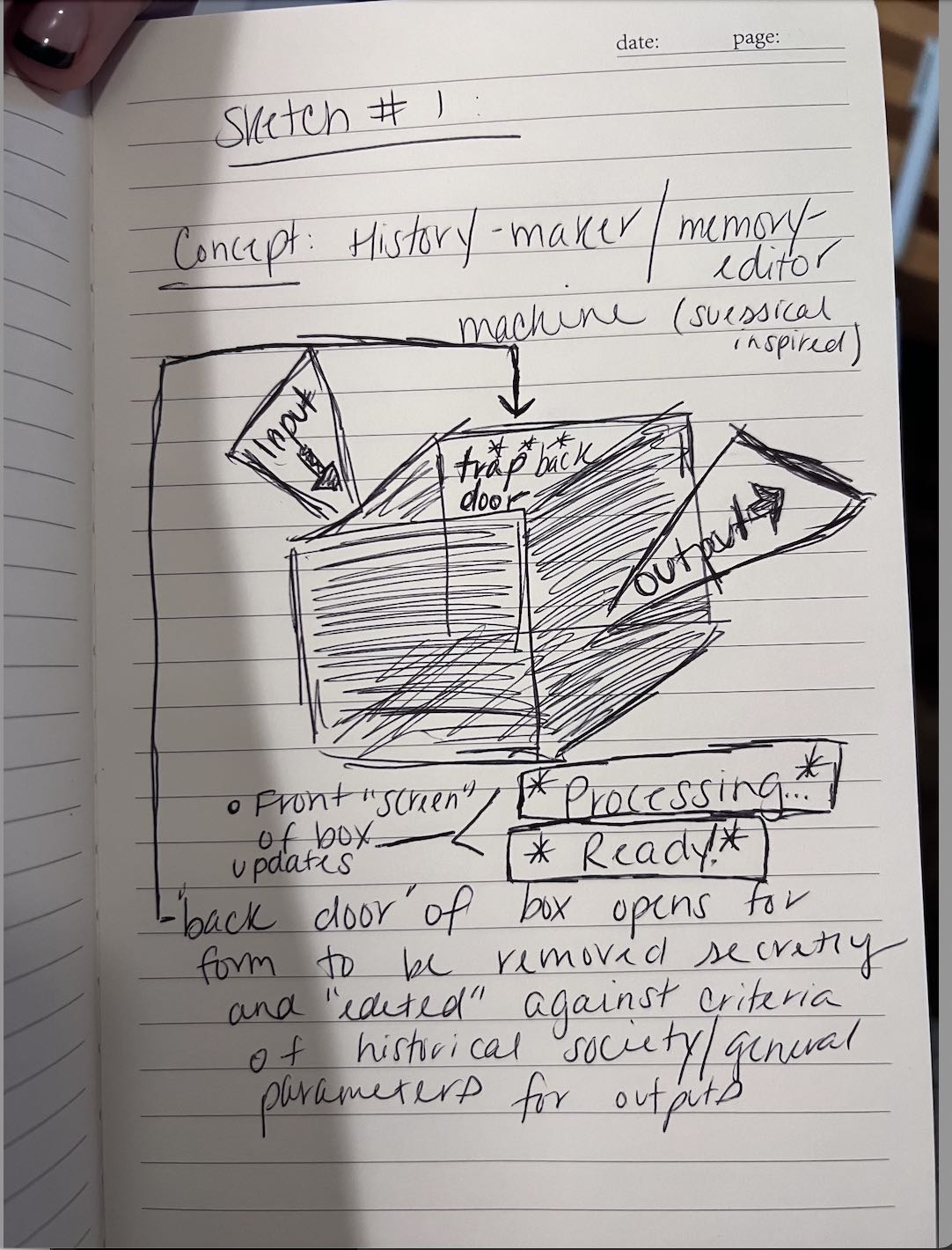
Janky Prototype: Video of the finished prototype (Will need to be signed into NYU address to access)
Process/Photos:



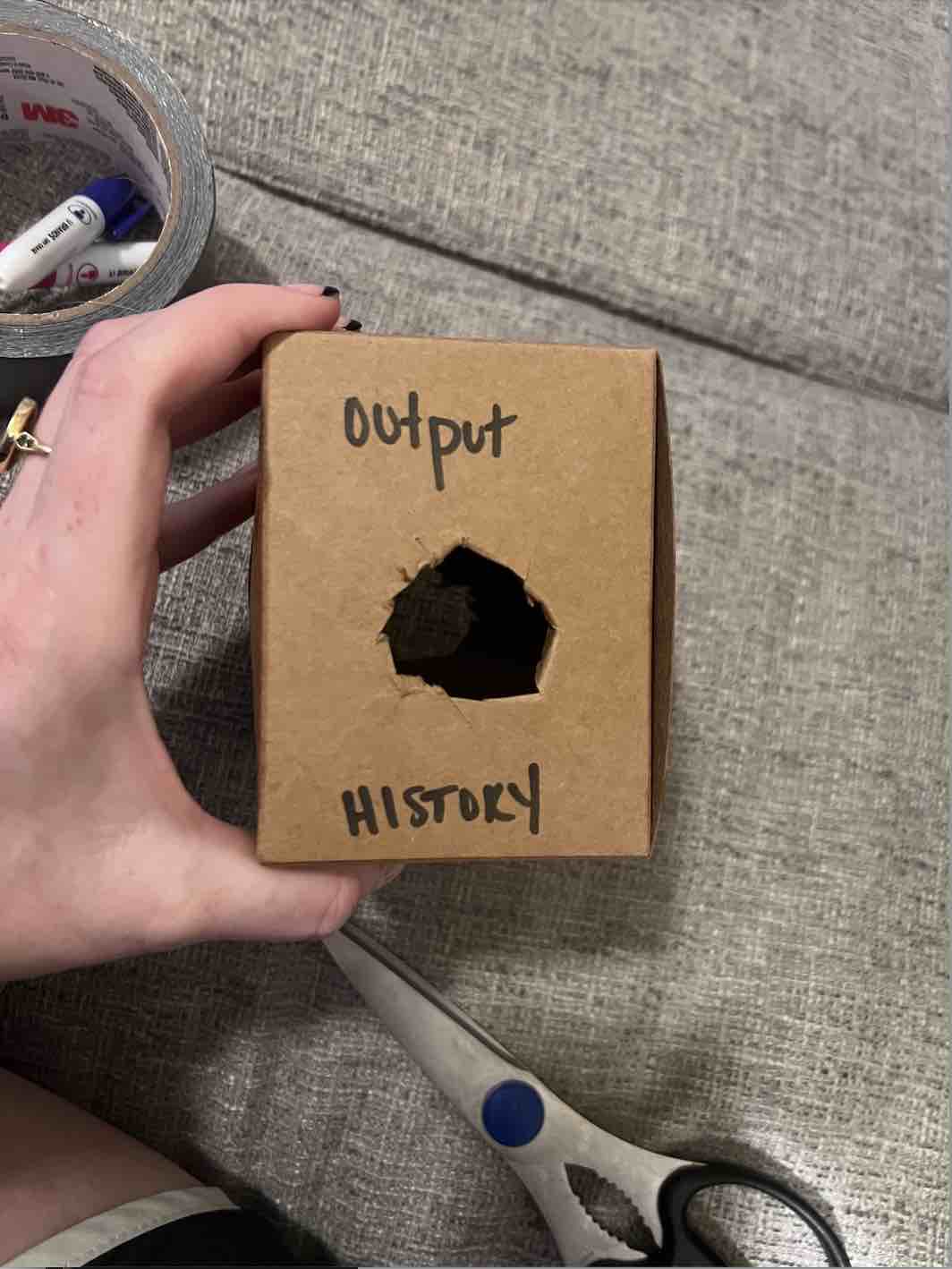
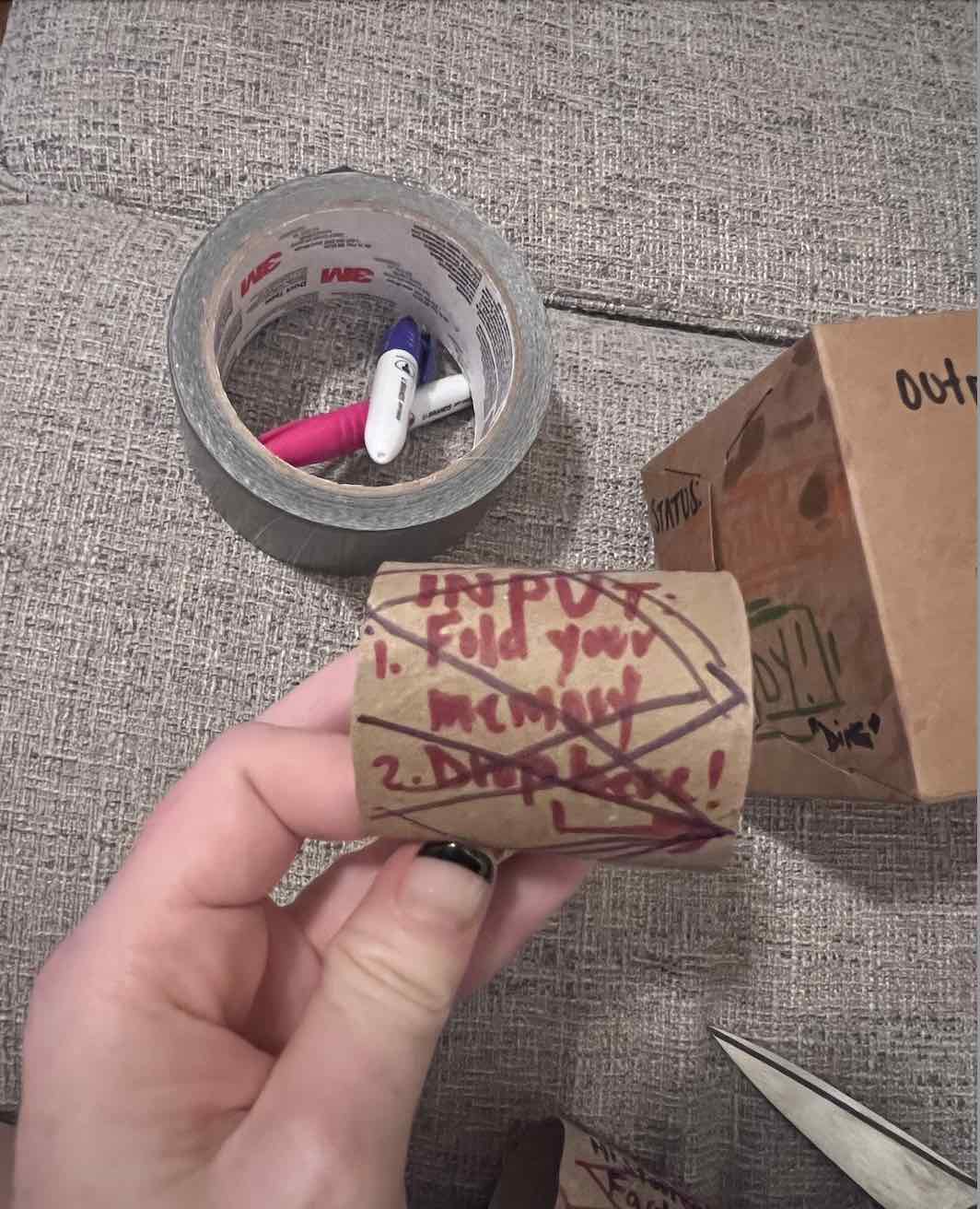
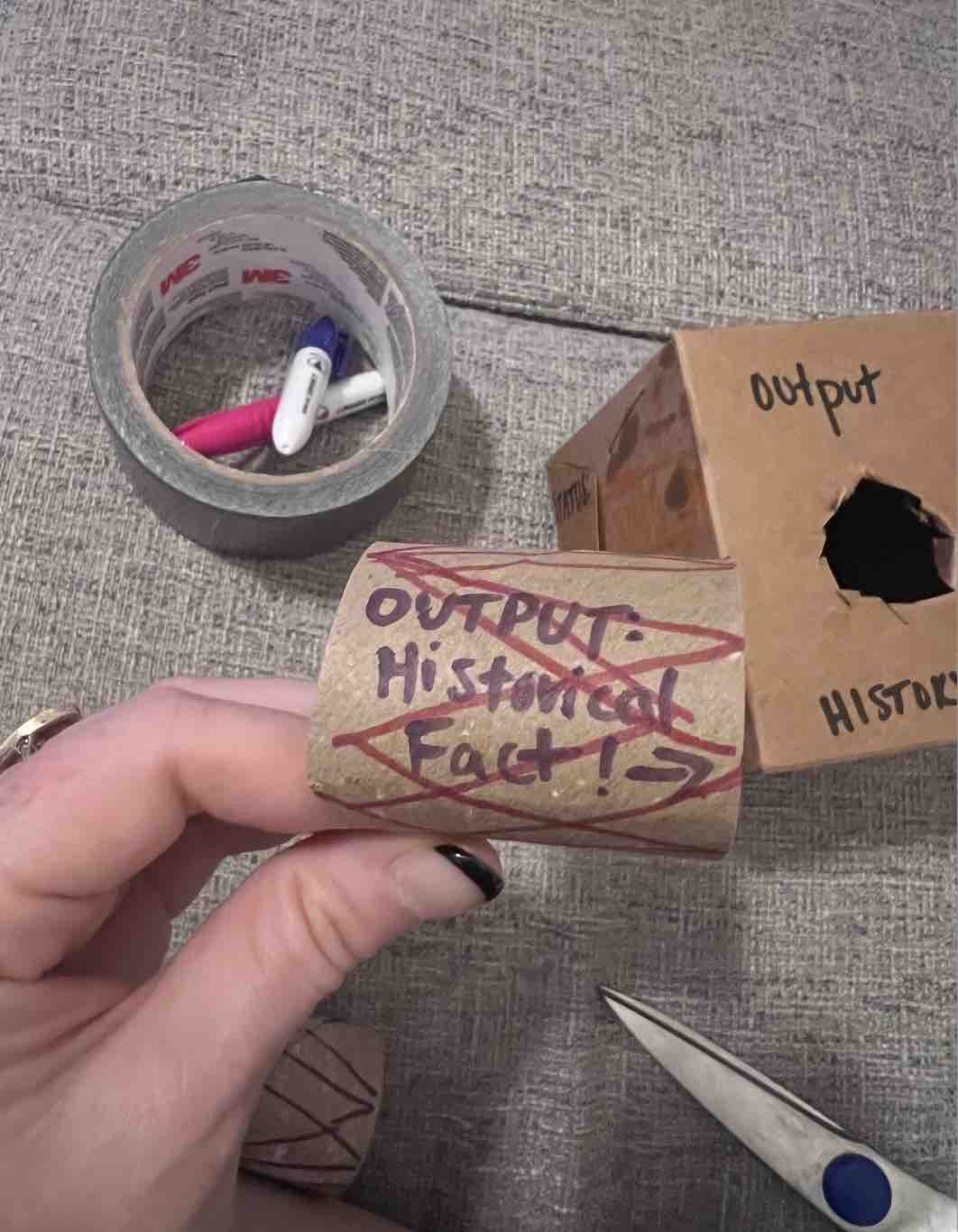
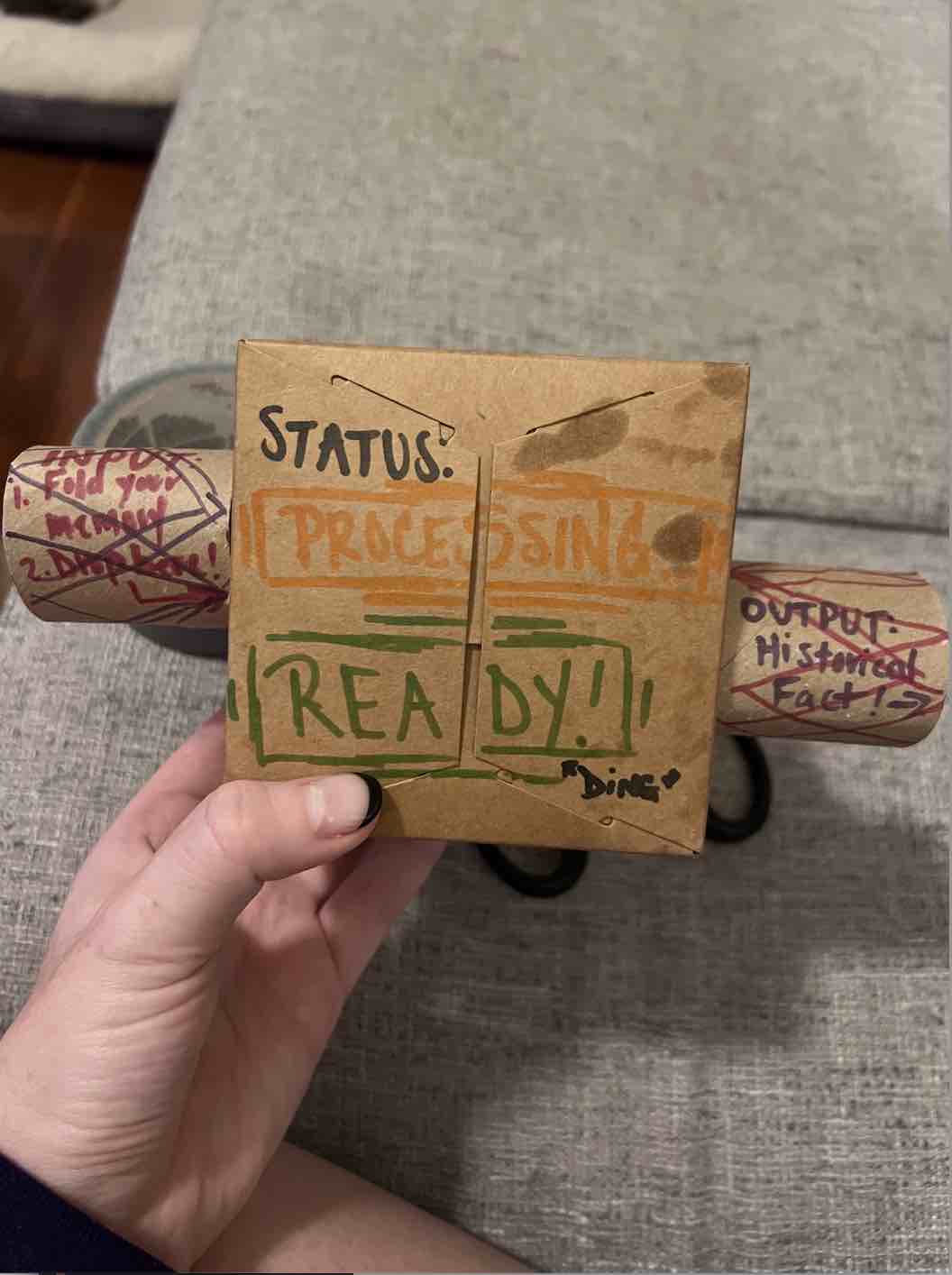
Janky Prototypes
Sketch From Class:
Topic: Sunscreen
Tech: Live streaming
Prototype 1: Live-streaming sunscreen efficacy


Prototype 2: An At-home testing kit to see how well your sunscreen, or other substances block the sun’s UV rays
Prototype 3: Imaging the future of sunscreen


IAE Response – Apartment hunting in NYC
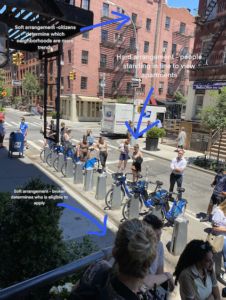
This is a picture of people standing in line to view an apartment in New York City. Finding an apartment in New York City is notorious for being expensive and competitive with a lot of spoken and unspoken rules. I think the I-D-E framework would be a good way to analyze the process.
Idea:
- People should be able to rent a place to live
- Landlords should be able to find tenants to rent to
Arrangements:
- Landlords have open houses for people to view their apartments
- Landlords set the rent prices of their apartments based on the market
- People apply to rent apartments
- To apply, Renters need to prove their income to be 40x the listed rent, have a good credit score, prove they have savings in a bank account, pay for a security deposit upfront, and pay an application fee
Effects:
- Limited housing options make renting an apartment competitive
- People secretly offer over the listed rent price or more money to brokers to get a leg up on competition
- Real estate brokers are able to add extremely expensive fees because people are desperate
- People need to spend over their budget to afford rent because the lack of inventory drives prices up
- Landlords are not maintaining their apartments and buildings because they know people are desperate
- People are giving away very personal information when they submit their applications (their income, bank statements, credit history, etc.)
- People are frequently scammed
- Real estate brokers are very rude and demanding
An arrangement I would change is to add more rent stabilization laws so that people can have more affordable housing. I would also require landlords to always pay the brokers fees so that people aren’t scammed as often.
Systems Maps
I am going to focus my project on sunscreen, and am still working on figuring out a specific point of view. I have a few ideas swirling around, but haven’t yet landed on how to take a critical approach to any of them.
- It feels like there’s a lot of conflicting information about sunscreen in general, and more specifically the ingredients that are used to protect skin from harmful UV rays. Some information seems to suggest that certain chemical blockers could have some effect on human hormone regulation, but other research mentions that any potential risk outweigh the cost of not wearing sunscreen and the risk of getting skin cancer. Is there a way to zero in on one conflict and dig into that?
- I have noticed a general belief that if you don’t burn, you don’t need for sunscreen as much as those that burn easily. On one hand, it seems like this is not true, because UVA rays don’t necessarily burn the skin but still cause damage. On the other hand, there is research that suggests getting sunburnt increases your risk of skin cancer. I wonder why certain people wear sun screen, and others don’t. For me it’s always been a given that it is necessary.
- Companies that make sunscreen are companies, and are profit driven. I wonder if there are any systems at play here below the surface. Do companies make sunscreen only last 80 minutes so that users need to reapply more frequently? Or is this truly a limitation of the science and formula development?
- Some ingredients in sunscreen are detrimental to the environment.
- Different countries use different systems for determining a sunscreen’s efficacy in blocking UVA rays. In the US it’s determined with the Critical Wavelength, and if it meets this criteria, it is deemed “broad spectrum. In Europe, it’s required to meet a Critical Wavelength, and additional criteria as well. In Japan and Korea, the PA+ rating system is used ( I still need to do some more research to understand how this is determined).
The first map is asking the question of who are the stakeholders of sunscreen? What are different stakeholders looking for in a sunscreen? There are a few more ideas in this figma, but the two main stakeholders I explored were humans that use sunscreen and companies that make it.
https://www.figma.com/file/aW3xVAs1fapX0GyrIgrUc0/system-diagram-1?node-id=0%3A1


The other map was vaguely trying to answer why some uses sunscreen and others don’t.
https://www.figma.com/file/RaIUL76a0gdlBlyKBwmv3H/system-diagram?node-id=0%3A1



